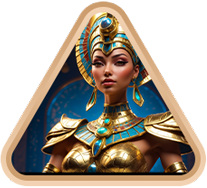The Bangladesh Cricket Board (BCB) has announced two significant items in advance of the 2025 National Cricket League (NCL) — Bangladesh’s oldest and most prestigious first-class competition. Starting on October 25, the new NCL season will include Mymensingh Division on the domestic red-ball circuit, and Kookaburra balls will be used in the first rounds to prepare players for the Test series to be played against Ireland next year.
These items, the addition of another division, and the use of Kookaburra balls, are part of the BCB’s plans to “modernize” Bangladesh’s domestic cricket setup and improve player preparation consistent with international cricket.
Mymensingh Division to Replace Dhaka Metro
In a surprising yet progressive decision, BCB announced the Mymensingh Division as Dhaka Metro’s replacement division this year in the NCL. The decision was taken during the board’s 20th meeting on August 9 and was officially communicated this week.
With this decision, Mymensingh becomes the first-time inclusion in the premier red-ball competition in Bangladesh – a step that expands Bangladesh’s cricketing map – and provides new regional flair to the competition in the capital city.
“As a consequence, the Dhaka Metro team will not play in the next competition,” the BCB added in a statement.
Cricket pundits are optimistic this expansion will assist in the discovery of untapped talent from Central Bangladesh, an area of the country that has historically produced promising cricketers in relative anonymity. Now that eight teams will be part of the NCL, the addition of the Mymensingh Division will ensure an even more competitive and geographically diverse competition season.
SUGGESTED READ: Umar Saifi Suspended After Doping Test
Kookaburra Balls to Feature in Early Rounds
Beyond team reshuffles, the bigger talking point lies in the BCB’s technical adjustment — the decision to use Kookaburra balls in the first two rounds of the NCL, followed by Dukes balls for the remaining matches.
This strategic shift is not just about variety. The BCB’s Cricket Operations Department explained that the change is aimed at helping domestic players adapt to international playing conditions, particularly ahead of Bangladesh’s two-Test series against Ireland in November, where Kookaburra balls will be used.
The first Test begins on November 11 in Sylhet, followed by the second on November 19 in Mirpur. Before that, players will get two NCL rounds’ worth of exposure to the Australian-made Kookaburra balls, known for their distinctive swing and seam behavior.
Why the Switch Matters: Adapting to Global Standards?
In Test cricket, the ball is just as pivotal as the pitch. For a long time, Bangladesh has used Duke balls in its domestic competitions to encourage seam movement and reward errors made by pacers. Most international Tests, however, especially those outside England and the West Indies, are played with Kookaburra balls, which offer a completely different experience.
The Duke’s ball stays seam and swing-friendly for longer periods of time than its counterpart, Kookaburra. The ball exhibits movement initially but becomes soft around the 20th over and loses its capacity for movement. Similarly, the flatter seam provides less grip for spinners until the ball has aged a bit.
By using Kookaburra balls locally, the BCB is hoping to expose batters and bowlers to learn the shorter swing window and tactical approach with this ball.
“It’s a necessary step to make our players more competitive in Test conditions abroad,” said a BCB operations official. “We are looking to provide exposure not to replace the Dukes.”
Technical Comparison: Kookaburra vs Dukes
| Feature | Kookaburra Balls | Dukes Balls |
| Seam Type | Machine-stitched, lower seam | Hand-stitched, raised seam |
| Swing Duration | Early swing, fades quickly | Sustains swing for longer |
| Surface | Smooth lacquered finish | Textured leather finish |
| Bounce Pattern | Consistent, predictable | More variable, aids seamers |
| Used In | Australia, South Africa, Asia | England, West Indies, Bangladesh domestic |
These differences make the Kookaburra ball a demanding tool — it rewards precision and tactical awareness rather than pure pace or seam. For Bangladesh’s bowlers, mastering the new-ball phase and reverse swing will be key skills to develop.
A Step Toward Long-Term Development
The hybrid approach of the BCB between Kookaburra and Dukes shows a greater desire to enhance the pipeline between local and global cricket. Alternation between the two types of balls will ensure that players will be in a better position to play under different conditions, whether at home or away.
Coaches and analysts have praised the approach as a “balanced experiment” that supports development without compromising the competitive structure of the NCL.
“It’s not about which ball is better,” said a senior domestic coach. “It’s about making our cricketers comfortable with both. If they can perform with Kookaburra balls here, they’ll perform anywhere.”
Challenges and Logistics
Despite the excitement, there are logistical and financial challenges. Kookaburra balls are costlier and require careful handling to maintain consistency across venues. Curators will also need to monitor how pitches respond differently to the two ball types.
Nonetheless, officials believe the benefits outweigh the concerns, especially as Bangladesh gears up for more frequent Test cricket in 2025–26.
Looking Ahead
The NCL 2025 is set to be one of the most heavily scrutinized NCL editions in some time — not just because of the Mymensingh Division’s debut at the first-class level, but how players prepare for the challenge of the Kookaburra cricket ball.
Results from the first two rounds may even impact Test team selection, as selectors get the “practice” of observing bowlers using the Kookaburra and which batters can handle the initial seam movement the Kookaburra will offer.
If it goes well, maybe the BCB will consider using Kookaburra balls in other domestic tournaments, such as the BCL or other regional tournaments.
Writer Take
The BCB’s decision to use Kookaburra balls demonstrates innovative thinking, as, through structural innovation and technical foresight, that decision is a future-oriented move for Bangladesh cricket. It is a decision to create variety within the domestic competition and provide realistic preparation for red-ball international cricket for players.
With the National Cricket League (NCL) starting on October 25, it would be interesting to see how the debut of Mymensingh and the Kookaburra experiment impacts Bangladesh’s preparation for Test cricket and domestic cricket.
YOU MIGHT READ: PCA Player of the Year Awards Cricket 2025 – Jordan Cox, Emma Lamb Win
The post BCB to Use Kookaburra Balls To Prepare Players for Test Series appeared first on JeetWin Blog.









